Once again, for Jana and I, luck and timing far outweighed spotting ability on the plains to the east of Lamai last week. By happy chance we can share these Rhino photographs with you all!
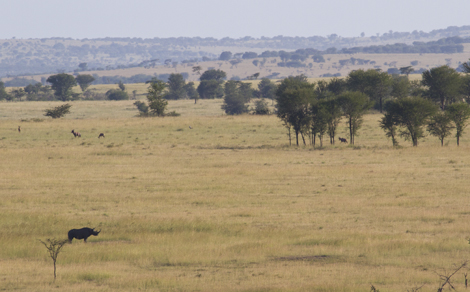
This young bull is notoriously shy of vehicles but with the area so undisturbed at this time of year he seems more willing to relax in the shade of a tree, once we switch off the engine.
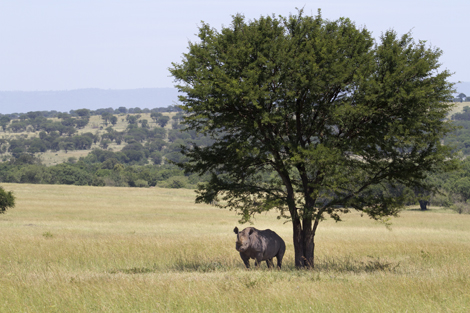
Dominant and imposing he is reaching his prime. The Serengeti is one of the few places one can view these creatures in such an open habitat, until now all of our previous Black Rhino sightings have been in very dense bush.
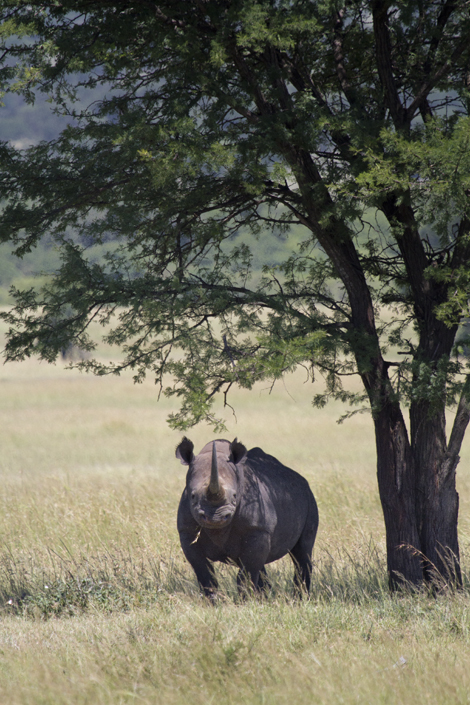
Of recent this bull has been seen following a female and her calf, born without ear pinnae (the outer ear structure). You may remember the pair featured in a previous blog (see October). The bulls presence could signify that the calf is beginning to wean and that his mother is showing signs of reaching breeding condition. Alternatively, as our guides believe, the young bull is in fact the calf's older brother and he is reluctent to stray too far from his own kind. Typically the books state that the Black Rhino is in general a solitary creature. However, recent filming and research has painted them in a far more gregorious light.
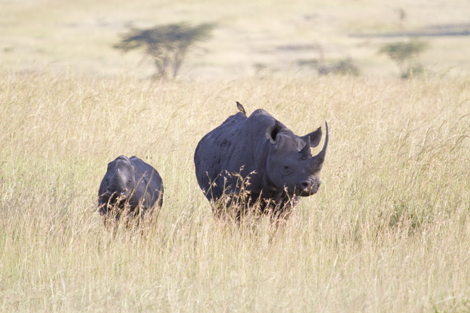
Having had the chance to observe him, the little calf seems to react to the sounds of the engine and the people in our vehicle. We think his hearing is there but it is almost certainly impaired by the lack of the outer ear structure (particularly in the ability to listen in specific directions). It is likely he'll develop a more finely honed sense of smell with which he can compensate for this and although his journey to adulthood may be more difficult than that of others, there is no reason that a creature this adaptable - left undisturbed by man - shouldn't lead a normal "rhino life".
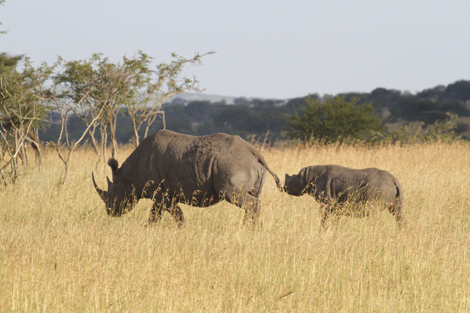
With the current global awareness campaigns highlighting the plight of the Rhino's, it should come as no suprise to hear that they are becoming rarer every day. The Black Rhino population is the Serengeti National Park is small and vulnerable. If, however, they remain protected then they have a habitat in which their population can recover and in time flourish. Enjoy these photographs of our Rhino's - let's not forget how precious they are.
